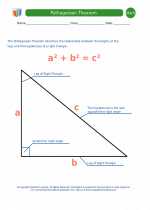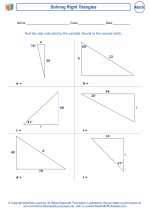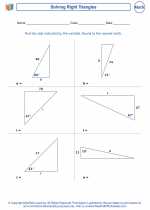Asymptotes
An asymptote is a straight line that a curve approaches but never touches. In the context of functions and graphs, asymptotes occur when the function approaches a particular value as the input (x) approaches positive or negative infinity.
Types of Asymptotes
- Vertical Asymptotes: A vertical line that the graph of a function approaches as the input value approaches a certain number. Vertical asymptotes occur when the function approaches positive or negative infinity as the input approaches a specific value.
- Horizontal Asymptotes: A horizontal line that the graph of a function approaches as the input value increases or decreases without bound. Horizontal asymptotes occur when the function approaches a constant value as the input approaches positive or negative infinity.
- Oblique (Slant) Asymptotes: A slanted or diagonal line that the graph of a function approaches as the input value increases or decreases without bound. Oblique asymptotes occur when the function approaches a non-horizontal straight line as the input approaches positive or negative infinity.
Finding Asymptotes
To find the asymptotes of a function, follow these steps:
- Vertical Asymptotes: Set the denominator of the function equal to zero and solve for the values of x. These values are the x-coordinates of the vertical asymptotes.
- Horizontal Asymptotes: Determine the behavior of the function as x approaches positive and negative infinity. If the function approaches a constant value in both directions, that value is the equation of the horizontal asymptote.
- Oblique (Slant) Asymptotes: For rational functions where the degree of the numerator is one more than the degree of the denominator, perform polynomial long division to find the oblique asymptote.
Study Guide
When studying asymptotes, be sure to focus on the following key concepts:
- Understanding the concept of asymptotes and their significance in the behavior of functions.
- Recognizing and identifying the different types of asymptotes (vertical, horizontal, oblique).
- Practicing finding asymptotes for various types of functions, including rational functions, exponential functions, and logarithmic functions.
- Understanding the graphical representation of asymptotes and how they affect the shape of a function's graph.
Additionally, it's important to practice solving problems involving asymptotes and to review examples of functions with different types of asymptotic behavior.
Remember to seek help and clarification on any concepts or problems that may be challenging, and to practice regularly to reinforce your understanding of asymptotes.
Good luck with your study of asymptotes!
.◂Math Worksheets and Study Guides Seventh Grade. The Pythagorean Theorem
Study Guide The Pythagorean Theorem
The Pythagorean Theorem  Study Guide
Study Guide Pythagorean Theorem Definitions
Pythagorean Theorem Definitions  Worksheet/Answer key
Worksheet/Answer key The Pythagorean Theorem
The Pythagorean Theorem  Worksheet/Answer key
Worksheet/Answer key The Pythagorean Theorem
The Pythagorean Theorem  Worksheet/Answer key
Worksheet/Answer key The Pythagorean Theorem
The Pythagorean Theorem  Worksheet/Answer key
Worksheet/Answer key The Pythagorean Theorem
The Pythagorean Theorem  Worksheet/Answer key
Worksheet/Answer key Pythagorean Theorem Distance Problems
Pythagorean Theorem Distance Problems  Worksheet/Answer key
Worksheet/Answer key Pythagorean Theorem Problems
Pythagorean Theorem Problems  Worksheet/Answer key
Worksheet/Answer key Pythagorean Theorem Distance Problems
Pythagorean Theorem Distance Problems  Worksheet/Answer key
Worksheet/Answer key Pythagorean Theorem Problems
Pythagorean Theorem Problems  Worksheet/Answer key
Worksheet/Answer key Solving Right Triangles
Solving Right Triangles  Worksheet/Answer key
Worksheet/Answer key Solving Right Triangles
Solving Right Triangles 

 Study Guide
Study Guide
 Worksheet/Answer key
Worksheet/Answer key
 Worksheet/Answer key
Worksheet/Answer key
 Worksheet/Answer key
Worksheet/Answer key
 Worksheet/Answer key
Worksheet/Answer key
 Worksheet/Answer key
Worksheet/Answer key
 Worksheet/Answer key
Worksheet/Answer key
 Worksheet/Answer key
Worksheet/Answer key
 Worksheet/Answer key
Worksheet/Answer key
 Worksheet/Answer key
Worksheet/Answer key
 Worksheet/Answer key
Worksheet/Answer key

The resources above cover the following skills:
Geometry (NCTM)
Analyze characteristics and properties of two- and three-dimensional geometric shapes and develop mathematical arguments about geometric relationships.
Create and critique inductive and deductive arguments concerning geometric ideas and relationships, such as congruence, similarity, and the Pythagorean relationship.